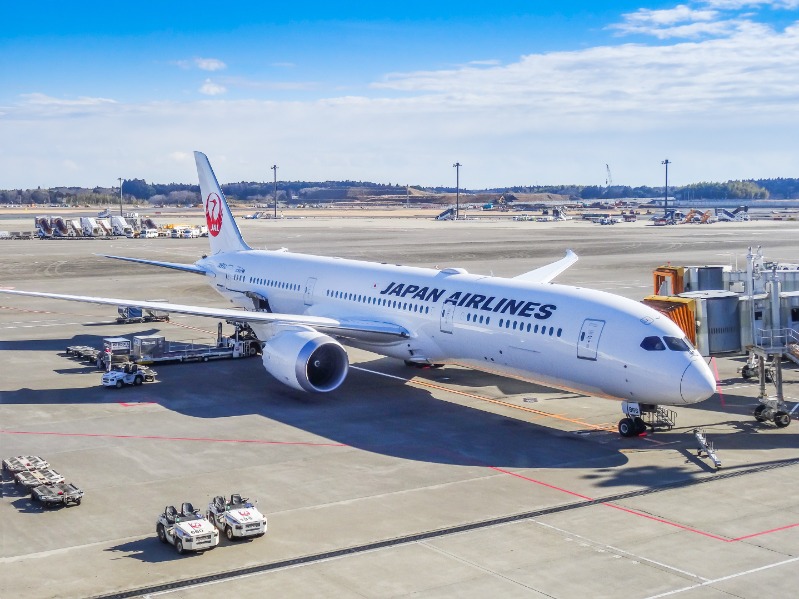How Long Does It Take to Get to Japan?

How Long Does It Take to Get to Japan?
Flight to Japan
Introduction
Planning a trip to Japan from the United States can be an exciting and rewarding adventure. As you embark on this journey, one of the first questions that may come to mind is: How long does it take to get to Japan? In this article, we will explore the different factors that can influence travel time, provide an overview of the available transportation options, and offer tips for a smooth journey. Whether you’re a seasoned traveler or a first-timer, this guide is designed to help you make informed decisions and enjoy your trip to Japan to the fullest.
Distance and Flight Duration
The distance between the U.S.A. and Japan varies depending on your departure city and the specific destination in Japan. On average, a direct flight from the West Coast of the U.S.A. to Tokyo takes approximately 10 to 12 hours. However, if you are traveling from the East Coast, the flight duration can range from 13 to 15 hours due to the increased distance.
Available Flight Routes
Several airlines operate flights between the U.S.A. and Japan, offering a range of routes and connecting cities. Popular routes include direct flights from major U.S. airports such as Los Angeles International Airport (LAX), San Francisco International Airport (SFO), or John F. Kennedy International Airport (JFK) in New York. Additionally, connecting flights through hubs like Chicago, Dallas, or Seattle are also common. It is important to consider these options while planning your trip and choose the route that best suits your needs.
Layovers and Transit Time
If you opt for a connecting flight, layovers can significantly impact your travel time. The duration of layovers can vary, but they typically range from a couple of hours to several hours depending on the airline and the chosen route. It is advisable to consider longer layovers if you wish to explore the layover city or break up the journey.
The approximate flight durations from major cities in the U.S.A. to Tokyo, Japan:
How long does it take to fly from the U.S. to Japan?
- Los Angeles, California (LAX) to Tokyo, Japan (HND/NRT): : Approximately 11-12 hours
- San Francisco, California (SFO) to Tokyo, Japan (HND/NRT): Approximately 10-11 hours
- Chicago, Illinois (ORD) to Tokyo, Japan (HND/NRT): Approximately 13-14 hours
- New York, New York (JFK) to Tokyo, Japan (HND/NRT): Approximately 14-15 hours
- Atlanta, Georgia (ATL) to Tokyo, Japan (HND/NRT):
Approximately 14-15 hours - Portland, Oregon (PDX) to Tokyo, Japan (HND/NRT): Approximately 11-12 hours
Please note that these durations are approximate and can vary depending on factors such as weather conditions, air traffic, and the specific flight route. Additionally, keep in mind that flights with layovers or connecting flights may have longer total travel times.
It’s also a good idea to check with airlines for the most up-to-date information regarding flight durations and schedules, as they can vary from time to time.
Choosing the Right Airlines
When selecting an airline for your journey to Japan, it is crucial to consider factors such as cost, comfort, and reliability. Several reputable carriers offer direct flights, including Japan Airlines, All Nippon Airways, United Airlines, Delta Air Lines, and American Airlines. Researching customer reviews and comparing prices can help you find the best option that suits your preferences.
Time Zone Differences
Japan is located ahead of most U.S. time zones. Tokyo, for example, is typically 13 to 17 hours ahead of the U.S. mainland, depending on your location. It is important to factor in the time zone differences when planning your itinerary, as jet lag can affect your initial days in Japan.
The flight time from the U.S. to Japan is much longer than the flight time from Japan to the U.S. because of westerlies.
One of the factors that can make the flight time from the U.S. to Japan longer compared to the flight time from Japan to the U.S. is the influence of westerlies. The westerlies are prevailing winds that blow from west to east in the mid-latitudes of both the Northern and Southern Hemispheres. When flying from the U.S. to Japan, airplanes often have to contend with these westward winds, which can create headwinds and increase the overall travel time. The westerly winds act as a natural barrier, opposing the aircraft’s forward motion and requiring more fuel and time to overcome. On the other hand, when flying from Japan to the U.S., the westerlies become tailwinds, providing a boost to the aircraft’s speed and reducing the flight duration. While the impact of westerlies on flight time may not be dramatic, it is one of the factors contributing to the longer duration when traveling from the U.S. to Japan compared to the return journey.
While the impact of westerlies on flight times can vary depending on several factors, including specific flight routes and prevailing weather conditions, it is possible to observe some general differences. Here are examples of flight times that showcase the effect of westerlies on travel durations between Tokyo and New York:
- Eastbound Flight (Tokyo to New York): Approximately 12-13 hours
- Westbound Flight (New York to Tokyo): Approximately 14-15 hours
Conclusion
In summary, the duration of your journey from the U.S.A. to Japan depends on various factors, including your departure city, destination in Japan, flight route, layovers, and time zone differences. On average, direct flights can take between 10 to 15 hours, while connecting flights may require additional travel time. Choosing the right airline and route, considering layover durations, and adjusting to the time zone differences can contribute to a smooth and enjoyable travel experience. Remember to plan ahead, pack essentials, and make the most of your time exploring the beautiful country of Japan. Bon voyage!










